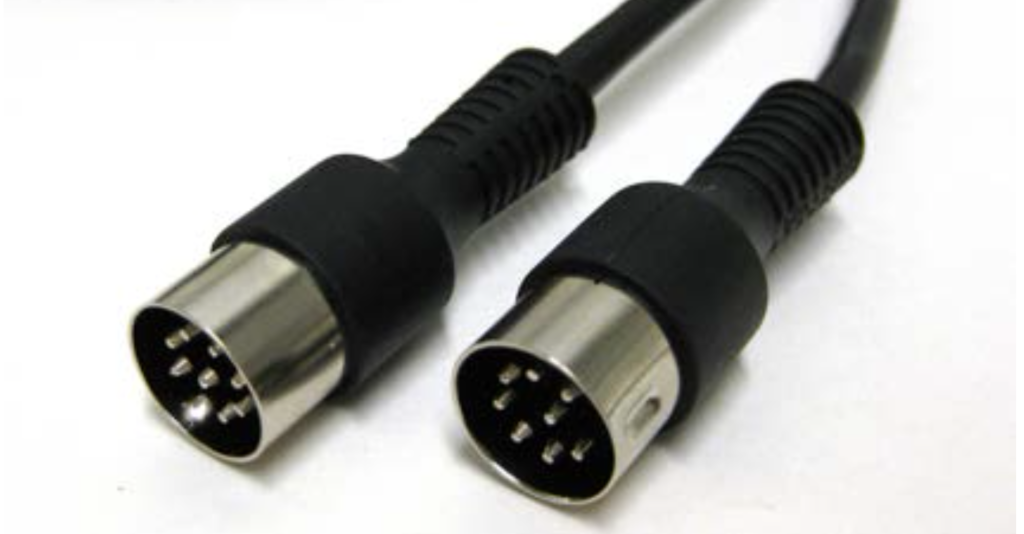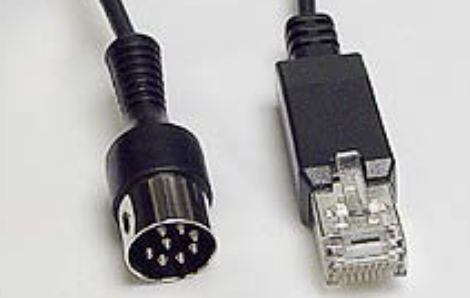Powerlink cable between Neo and B&O products
What is a Power Link cable and how do I choose the right one for use with Neo products and B&O products. All details about the cables can be read here.
What is a Power Link cable
Bang & Olufsen has for many years used PowerLink cables between the products. Neo products also use Power Link cables between the Neo and B&O products. The Power Link cable and the standard were developed at B&O and are only used between B&O products.
If you therefore have Powerlink cables from before, they can probably be used again.

It is, however, that B&O at one point chose to switch from the 8-pole DIN cable to RJ45 connectors.
You must therefore be aware of which types of plugs are to be used.

Which Powerlink cables are available?
There are typically 3 types of Bang & Olufsen Power link cable.
Powerlink cable model 1 (MK I or Mk 1)
The cable contains 6 wires, of which 2 pairs are pair-twisted and shielded (right and left channel. In addition, the entire cable is shielded in one. It was the first variant that was used by B&O products – a powerlink cable from b&o.
Powerlink cable model 2 (Mk II or Mk 2)
The cable contains 8 wires, of which 2 pairs are pair-twisted and shielded (right and left channel, 1 wire is shielded (data traffic) and one wire for Overload signal. The entire cable is shielded in one.
The cable is typically used for speakers with a display. These are B&O speakers, such as BeoLab 3000, BeoLab 4500, BeoLab 5000, Penta MK II and Penta MK III.
The cable is also used for amplifiers, such as the ML/MCL Converter and BeoLink Passive.
The above speakers and amplifiers must use specific wires in cable. Pin 6 on the connector is a Data pin, which is required to be able to use the display on the speaker. Pin 1 of the connector is on / off the speaker and finally pin 8 is detection of overload on the amplifiers.
Powerlink cable model 3 (Mk III or Mk 3)
The cable contains 4 wires and a ground wire (screen). Each channel (right and left) is connected to the screen as well as a wire for speaker on/off. The original B&O cable of this type is called Power Link Kabel MKIII.
The cable is typically used for speakers such as BeoLab 2, BeoLab 3, BeoLab 4, BeoLab 7 series, BeoLab 9, BeoLab 10, BeoLab 11, BeoLab 12, BeoLab 14, BeoLab 17, BeoLab 18, BeoLab 19, BeoLab 20, BeoLab 4000 MK II , BeoLab 6002, BeoLab 8002.
If a powerlink cable MKIII is used for speakers, as specified under "Powerlink cable model 2", then noise will come into the speaker, as these speakers have a power supply with switch-mode technology built in.
It is also not sensible to use the "Powerlink cable model 3" cable over 10 meters in length. It also produces noise in the speaker.
Why does "Powerlink cable model 3" actually exist when problems arise with the cable. This is because the cable is thin – typically with a diameter of 2,5 mm – and this makes installation easier – it is easier to hide behind moldings and so on.
Powerlink cable model 9 (Mk 9)
Now what is model 9? We have chosen to call this the Power link cable Neomesteren, which is an alternative to Mk 1, Mk 2 or Mk 3. The name Mk 9 is just chosen so that there is no confusion - it has no more meaning.
Why do we do it? On Neo Shop sold both Mk 1, Mk 2, Mk 3 and Mk 9 of Powerlink cables.
Power Link cables are relatively expensive to acquire, as the complexity inside the cable makes the cable expensive to manufacture. Wires generally do not cost much, but shielded wires do as well as an interlacing in a cable - so it ends up with expensive cables.
Are the expensive double shielded cables necessary? In some cases yes, but in many cases it is not.
The cable Mk 9 is cheaper than the other models and is therefore an alternative to choose for different setups – there is a lot of money to be saved on cables.
We are not saying that you should always choose Mk 9 cables or Mk 2 cables – we are saying that you should choose the cable according to the application.
Power link plug connection and explanation
| DIN 8 Pin | RJ45 Pin | Description | Mk 1 | Mk 2 | Mk 3 | Mk 9 |
|---|---|---|---|---|---|---|
| 1 | 5 | Power Up | √ | √ | ||
| 2 | 3 | Signal GND | √ | √ | √ | √ |
| 3 | 8 | Audio Left Out | √ | √ | √ | √ |
| 4 | 4 | Speaker On/Off | √ | √ | √ | √ |
| 5 | 6 | Audio Right Out | √ | √ | √ | √ |
| 6 | 2 | Data Signal | √ | √ | √ | |
| 7 | Shield | Data GND | √ | √ | √ | √ |
| 8 | 1 | Overload | √ | √ |
How do I choose the right Power Link cable?
We hope the above text can help you choose the right Power Link cable for your B&O products and Neo products.
We advise primarily in the choice of cables, which include Neo products where we have experience and can provide guidelines. Most people choose based on price and quality - but we think you should also think about the purpose.
Neo 7 Adapter
Do you have a Beovision 7 system and have updated the TV to a new one, where you use Neo 7 Adapter. read about Neo 7 Adapter here
Here you can use all cable types - but Mk 3 and Mk 9 are sufficient if you only have Beolab 7 speakers connected. The data signal is not used, so Mk 1 and Mk 2 are not needed. The Mk 9 only has shielding around the cable, but Neo Shop has a 0,5 meter cable and such a short cable doesn't pick up noise you can hear (we think)
You can therefore make do with the cheap cable.
If you use several speakers, it is more complex - see opposite in the description about the different types.
Neo Radio
Do you use Neo Radio from Neomesteren, then you must connect a Power Link cable between Neo Radio and your B&O product. Read more about Neo Radio here
Here you must use a MK 1, 2 or Mk 9 splitter cable, as the distance is typically short.
Other uses of the power link cable
Neo Shop has splitter cables where you split the Powerlink signal to several speakers. If there is a short distance to the speakers, typically 1-2 meters to each speaker, you can use the cheaper splitter cables such as Mk 9 from Neo Shop. If there are long distances to the speakers, use Mk 2 fully assembled (which are the most expensive).
Ordinary extension cables of 1-2 meters can be used as Mk 9 (cheapest), but if you get more than 2 meters in extension, use Mk 2 fully assembled (most expensive)
If you are unsure about the choice, buy Mk 2 cables. They are absolutely the most expensive and are fully assembled.
Another very important factor – can you hear the difference? What do we mean by that? If you can't hear noise with the cheap cables, why buy the expensive ones? a simple listening test reveals it simply.
In the high-end HiFi industry, there are golden ears that can hear the difference between the copper type on a cable.... We just don't think most people can do that!
Perhaps you just have to choose for yourself based on whether it makes an audible difference!

